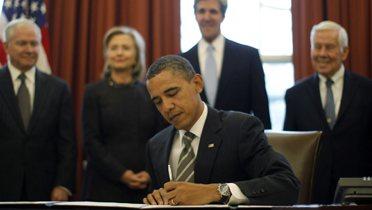The Aspen Institute convenes several times each year a Congressional Seminar that brings together bipartisan groups of Senators and Members of Congress for in-depth discussions on issues critical to U.S. foreign and domestic policy. At an April Aspen Institute Congressional Seminar on “Nuclear Challenges for the United States: Coping with Change in the Global Nuclear Order,” Steven Pifer led a discussion on managing the U.S.-Russian nuclear relationship. He prepared in advance the below paper examining the issues that would likely arise in a future round of U.S.-Russian nuclear reduction negotiations.
INTRODUCTION
What Comes Next after New START
Reducing strategic nuclear arms has played a central role in the Obama administration’s “reset” policy with Moscow. The administration believes the United States and Russia—which between them control more than 90 percent of the world’s nuclear weapons—can significantly reduce their arsenals in a way that promotes a more stable nuclear balance. The administration also believes that such reductions will bolster the credibility of its efforts to discourage the proliferation of nuclear weapons.
The New Strategic Arms Reduction Treaty (New START) entered into force in February. It provides that, by 2018, U.S. and Russian strategic forces will each be limited to no more than 700 deployed intercontinental ballistic missiles (ICBMs), submarine-launched ballistic missiles (SLBMs) and nuclear-capable bombers, and 1550 deployed strategic warheads.[1] The United States will reduce more strategic delivery vehicles—missiles and bombers—while the Russians reduce more deployed strategic warheads.[2]
The Obama administration seeks another round of U.S.-Russian negotiations. President Medvedev has agreed in principle to a step-by-step process of nuclear reductions, though Moscow does not appear enthusiastic about engaging in early negotiations on further cuts and has said that other questions, such as missile defense, should be dealt with first. Any new negotiation will be a more complex process than the one that produced the New START Treaty. Third-country nuclear forces, missile defense and long-range conventional strike systems could also arise. In parallel, Washington and Moscow might consider cooperating to strengthen the broader nuclear non-proliferation regime.
[1] “Deployed” systems include ICBMs in silos and SLBMs on submarines. The treaty also limits each side to 800 deployed and non-deployed launchers and bombers. “Non-deployed” launchers are empty ICBM silos and empty SLBM tubes. Typically, two U.S. Trident submarines are in port undergoing long-term maintenance and carry no SLBMs; their SLBM tubes count as “non-deployed” launchers.
[2] At the beginning of 2010, the United States deployed 832 strategic delivery vehicles with 1968 warheads. Russia deployed an estimated 566 strategic delivery vehicles carrying some 2600 warheads. Tables 1-4 provide more information on U.S. and Russian nuclear weapons numbers.



